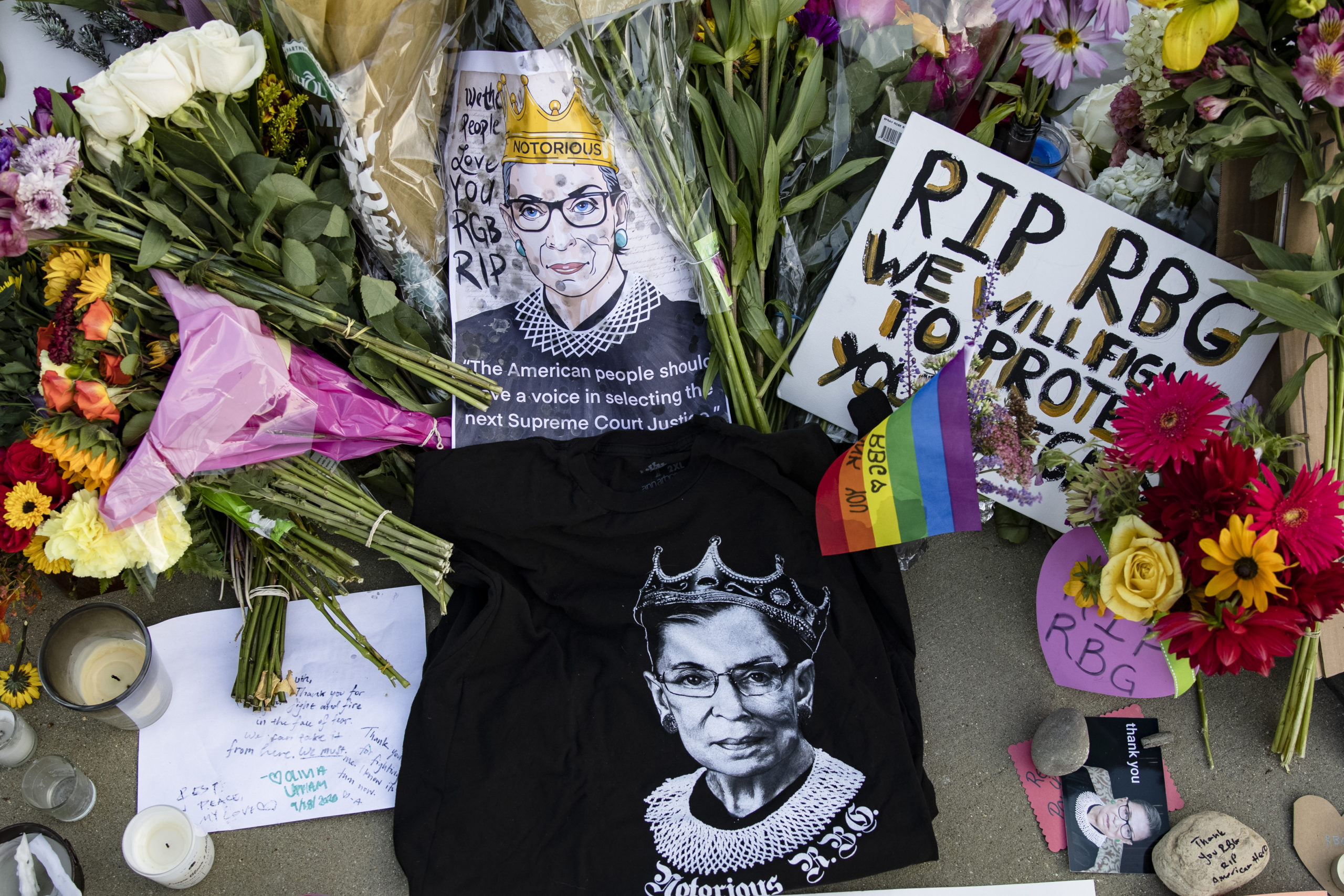Nathan Gardels is the editor-in-chief of Noema Magazine. He is also the co-founder of and a senior adviser to the Berggruen Institute.
Laws are not so much a point of departure as a point of arrival that codifies new rights demanded from within societies awakened to the need for their just confirmation. Such demands don’t just arise by themselves off the parchment of hallowed constitutions, but are activated by social movements that force the reinterpretation of principles lain dormant by convention and prejudice.
Supreme Court Justice Ruth Bader Ginsburg, who died last week, seized the moment to move the needle by reinterpreting the “equal protection under the law” clause of the U.S. Constitution in the context of a new reality created by the massive postwar entry of women into the workforce and the consequent groundswell of feminist consciousness that sought to climb up from the pedestal, which Ginsburg called a “cage,” to challenge the glass ceiling of equality with men.
“Change was not possible until there was a groundswell of women waking up, women in numbers joining together to change the not-so-good old ways,” she said in an interview with Razia Iqbal last December when she received the Berggruen Prize for Culture and Philosophy in a ceremony held annually at the New York Public Library.
“I was driven by two forces,” she recounted. “One was my students. The feminist movement was reborn, and my students wanted a course on women and the law. So, I went to the library and inside of a month, I read every federal decision ever written about gender-based discrimination. It was no mean feat. There was very little written about the subordination of women back then.
The other propelling force was women coming to the American Civil Liberties Union for assistance with complaints they hadn’t aired before. One large group, comprised of teachers, was put on what was euphemistically called ‘maternity leave’ as soon as their pregnancies began to show. After all, the school district didn’t want the little children to think their teacher had swallowed a watermelon.”
She recalled the sense of injustice the teachers conveyed: “We are ready, willing and able to work; there’s no reason why we should be forced out of the classroom on unpaid leave with no guaranteed right to come back.” And then, Ginsburg continued, “there were blue-collar women with factory jobs who wanted to get health insurance for their families. They were told that family coverage is available to men but not to women.”
Even as so many celebrate Justice Ginsburg’s historic accomplishments, her absence from the Supreme Court now opens a new space to interpret the Constitution at a moment when America has plunged into a bitter social and cultural civil war driven by populist demagoguery and cancel culture at its extreme edges. Making law now that establishes new rights or invalidates old ones will be a battle royal between polarized social movements. So many things are up for grabs, from healthcare coverage to abortion rights to election rules.
In a private conversation before the prize ceremony in December, Justice Ginsburg made no secret that the sole aim in her waning life was “to hang in there” until Trump was gone. Her legendary fortitude almost carried her through. For the moment, everything now depends on how the social balance of power shapes the high court and its rulings, as did the wave of feminist awakening upon which RBG rode in her career.
Perhaps the only silver lining of America’s descent into polarized dysfunction that will shade the rule of law going forward is that it may prompt a restructuring of the Supreme Court itself. There is nothing enshrined in the Constitution about the number of justices. Nothing is sacred about nine members other than it is an odd number to break ties.
During the presidential campaign, Pete Buttigieg advanced a proposal that has gained traction in the wake of Justice Ginsburg’s passing. He proposed expanding the court to 15 members, five affiliated with Democrats and five with Republicans, and then 5 nonpartisan justices chosen by the first 10. Leaving aside that current political formations should not be constitutionally enshrined, the spirit of a structure that impedes the ability of any president and Senate majority to stack the court is eminently sensible.
As is so often the case in crises, trials can be turned into triumphs when it is understood that the obstacle is the way. The discourse now should not focus on rulings of the constitutional court, but on how the court is constituted.





